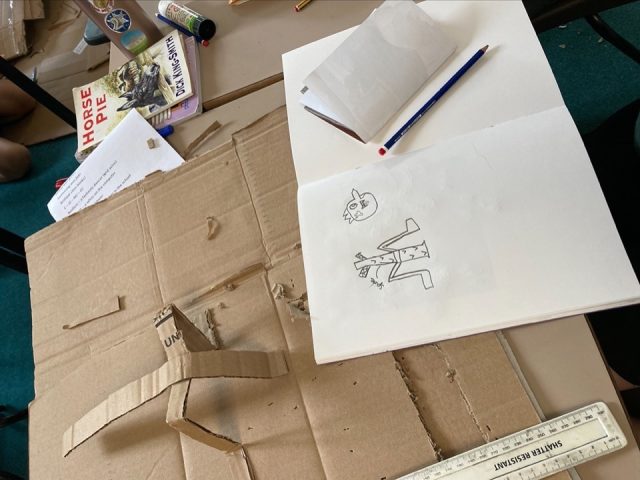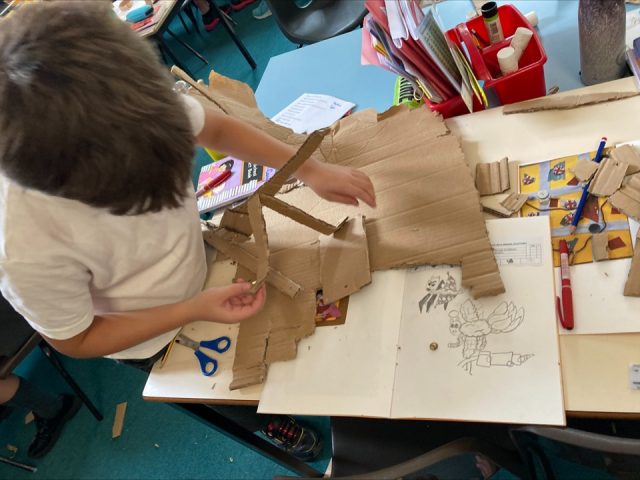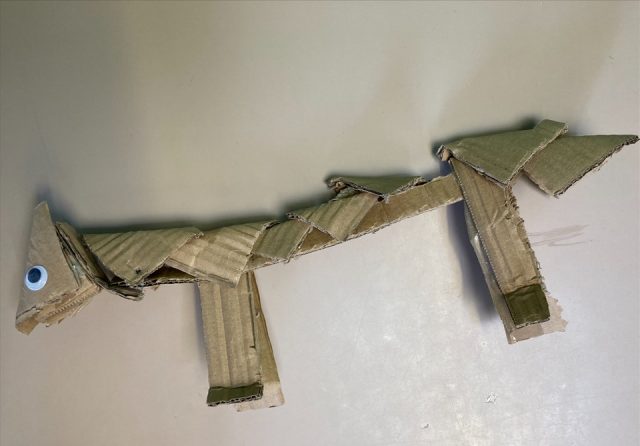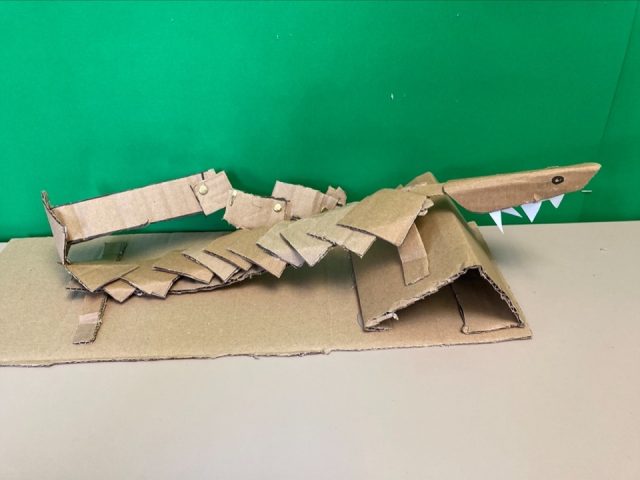Well done to children in Amazon Class, who have completed a great DT topic on ‘Animals with Moving Heads’!
To start with, we looked at some adverts for moving toys on the market, including a very old one for Action Man with a moving eyes lever! We then used our theme, Endangered Animals, to research an animal and how its mouth moved. The next step was our prototype when we had a go at creating the 3-d model and adding a crank or lever mechanism, to make the mouth or tongue move. This was the tricky bit!
Finally, we used what we learned from making our prototypes to create our final products. We decided to use thicker card. Lots of us used a crank mechanism for waggling tongues; a few of us had a lever for nodding heads. We even had a few flapping wings! I was really impressed with the way children worked on the detail, to make their models really professional. Then, as you do, we had a great discussion, or evaluation, to talk about what we enjoyed about this topic, what we found easy and what was downright fiddly! Great work, Amazon Class – your creativity is amazing!

























